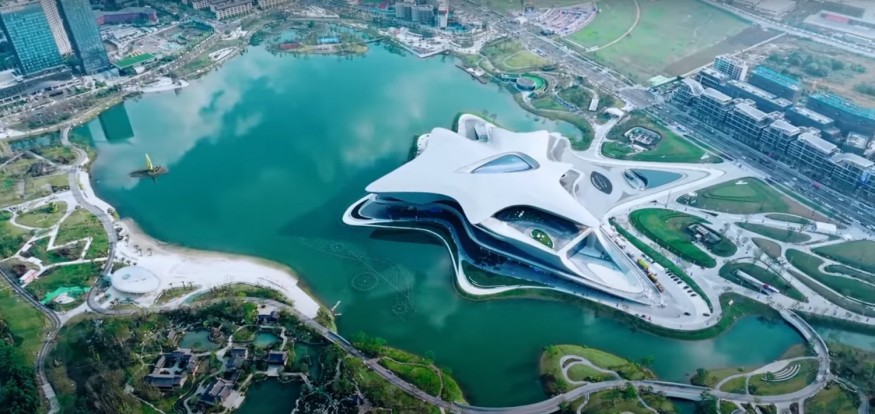Chengdu’s ‘Floating’ Science Fiction Museum Setting New Standards for Futuristic Design

The Chengdu Science Fiction Museum is a stunning sight on the glassy surface of a lake in the center of Sichuan province, Southwest China. Science fiction comes to life with a seven-point metallic star that defies convention and evokes images of an alien civilization or a spaceship landing on a planet. This enormous 59,000 square meter structure, created by Zaha Hadid Architects, reflects the genre it honors: unconventional, futuristic, and astounding.
A Swift Journey from Concept to Completion
The Chengdu Science Fiction Museum proves contemporary design's amazing potential. This enormous structure, initially intended to be three times the size of the Sydney Opera House, was brought in 2022 to serve as the location of the 81st World Science Fiction Convention (Worldcon). It only took 1.5 years to complete the process. This quick construction, which usually takes four to five years, is a tribute to architectural skill as much as the pressing need to embrace the future.
The Architects' Vision
The museum, which Zaha Hadid Architects created, is evidence of the company's audacious strategy and proficiency with digital design. Project director Paulo Flores observes that the dynamic roof changes from one perspective to another, emulating the surrounding mountains and producing an unpredictable and constantly evolving visual experience. The design pays homage to science fiction's leap into the future and actively contributes to shaping what the future looks like, both visually and technologically.
Zaha Hadid Architects, known for embracing technology, employed polygonal modeling software to create three-dimensional simulations of the building. The digital tools enabled the ambitious design and played a pivotal role in the rapid execution of the project. Construction commenced just two weeks after winning the competition, with various design software ensuring seamless coordination among architects, materials manufacturers, and construction workers.
.
Sustainable and Technological Integration
The museum integrates green technology to minimize its environmental impact. Solar panels embedded in the expansive roof harness solar energy, while skylights and floor-to-ceiling windows reduce the need for artificial lighting during the day. The metallic skin serves a dual purpose: providing visual intrigue and acting as a sun shield, reducing direct sunlight radiation and energy consumption. Digital modeling analysis was crucial in optimizing the building's structure for Chengdu's climate, ensuring efficiency and sustainability.
Local Sourcing and Modular Innovation
The architects sourced materials locally to meet the tight timeline and devised innovative solutions. A modular aluminum panel system, conceived to sit "underneath the skin" of the roof canopy, creates smooth curves and expedites production in a factory setting. This approach exemplifies the architects' commitment to simplicity and efficiency without compromising on the grandeur of their vision.

Chengdu's Vision for the Future
The Science Fiction Museum is part of Chengdu's larger "Future City" development in the Pidu district, a 4.6-square-kilometer site set to host new universities, laboratories, and offices. As a burgeoning metropolis, Chengdu has embraced the "Future City" as a testament to its commitment to science, technology, and economic growth. The museum, a vital component of this vision, positions Chengdu as a leading global science fiction industry hub.
The Chengdu Science Fiction Museum has not only defied the laws of architectural timelines but has become a symbol of Chengdu's ambitious journey into the future. Blending futuristic aesthetics with sustainability and technology, this monumental structure stands as an iconic landmark representing China's science fiction capital and a global beacon of architectural innovation. With its successful hosting of the 81st Worldcon, the museum is poised to nurture the ambitions of Chengdu's "Future City" and leave an indelible mark on the evolving skyline of Southwest China.
From Digital Models to 3D-Printed Homes: Jaspreet Kaur Lall Explains How the Innovation Changes the Construction Industry

Future Belongs to Green Construction: Sampath Kumar Paspunoori Explains One of the Key Trends in the Construction Industry

Kamala Harris' Campaign Ad Uses Iconic Visuals from Carrie Mae Weems to Connect with Voters

Historic Ancient Roman Ruins in Baalbek Remain Strong After Israeli Air Strikes; Locals Seek Cultural Protection

4 Ways to Honor Departed Loved Ones in Your Home Design










